Carolina Sunrock Earns International Recognition
BY AsphaltPro Staff
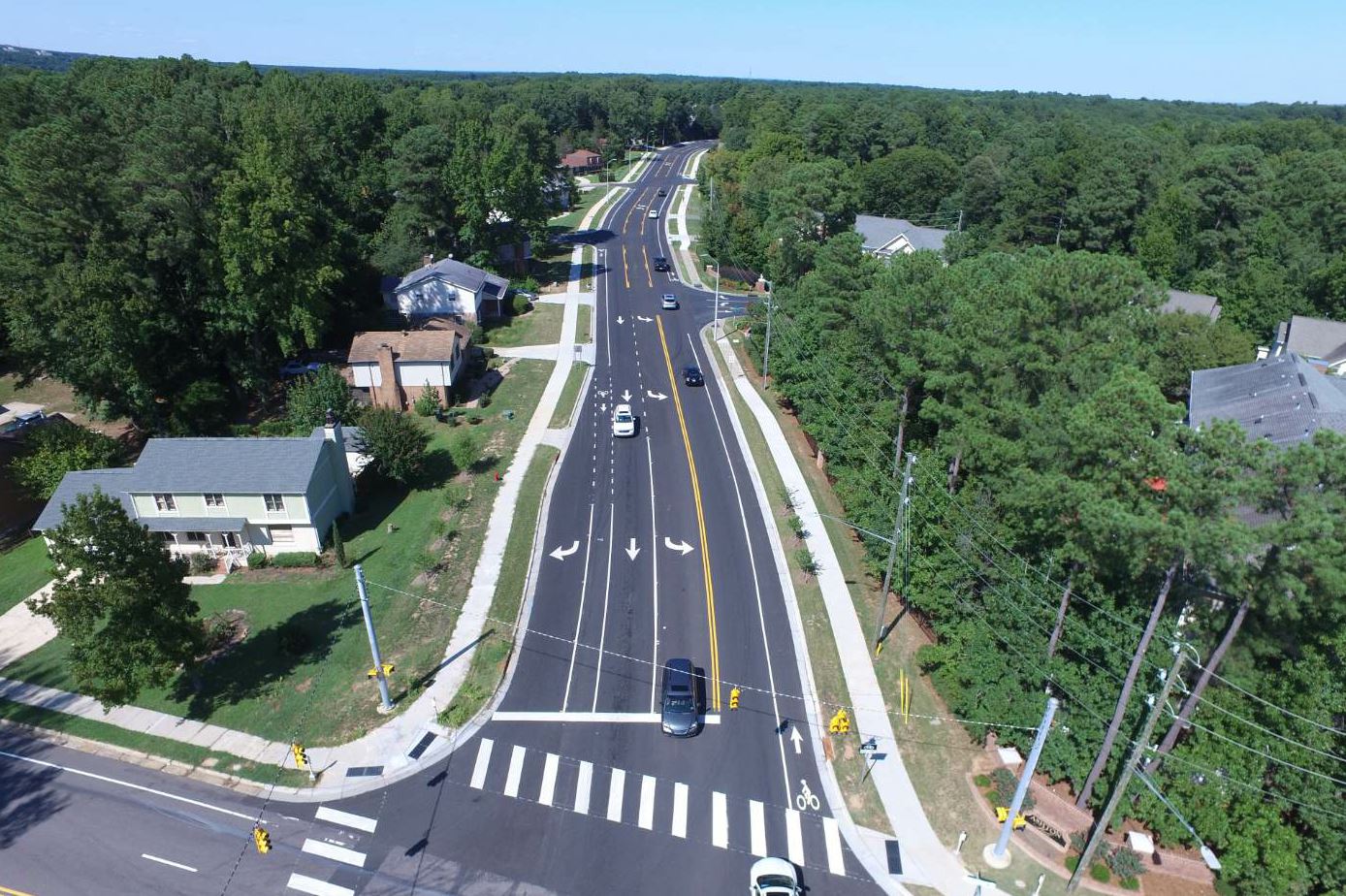
When expanding your company into new services, it may take some time for your community to recognize those changes. However, receiving both national and international recognition for a job well done can certainly help.
That’s exactly what happened for Carolina Sunrock LLC, Raleigh, North Carolina, when it paved an award-winning project on Sandy Forks Road in North Raleigh.
The project not only received a Quality in Construction Award from the National Asphalt Pavement Association, but was also recognized as the first project in the state to receive a silver certification from Greenroads Foundation, a transportation sustainability nonprofit.
The project is also recognized as Greenroads’ highest rated project internationally to date.
From Quarry to King of the Road
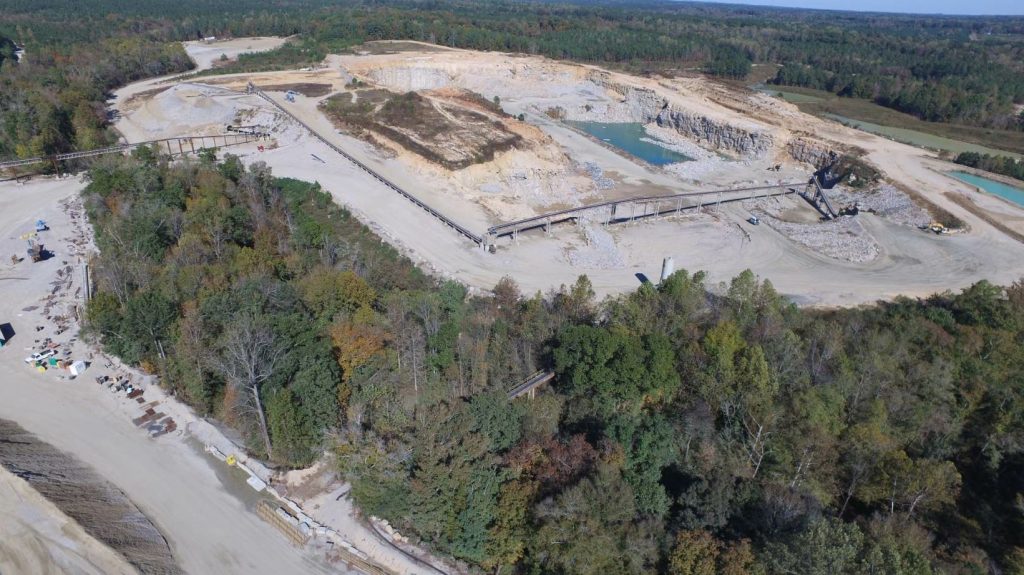
Sunrock got its start in quarries nearly 70 years ago. Four of its asphalt plants are located at its quarries, in Durham, Woodsdale, Butner and Kittrell.
Sunrock got its start in quarries nearly 70 years ago. Today, the company has 400 employees across all of its divisions, with 30 to 40 in its plants and 35 to 40 on its asphalt paving crews.
Over time, the company added six asphalt plants to its repertoire: an Astec/Cedar Rapids hybrid in North Raleigh, an Astec Double Barrel near Raleigh–Durham International Airport, an Astec/ Cedar Rapids hybrid at its Durham quarry, a hybrid at its Woodsdale quarry, an ALmix plant with Gencor Silos and drag conveyor at its Butner quarry, and an Astec Batch plant at its Kittrell quarry. The company is also going to begin construction of a new plant in Prospect Hill this spring.
Then, six years ago, the company decided to start a contracting division. That’s when John Barrett stepped up to the plate. Prior to joining Sunrock as its general manager of contracting, Barrett had co-owned a small construction company that bought many of its materials through Sunrock.
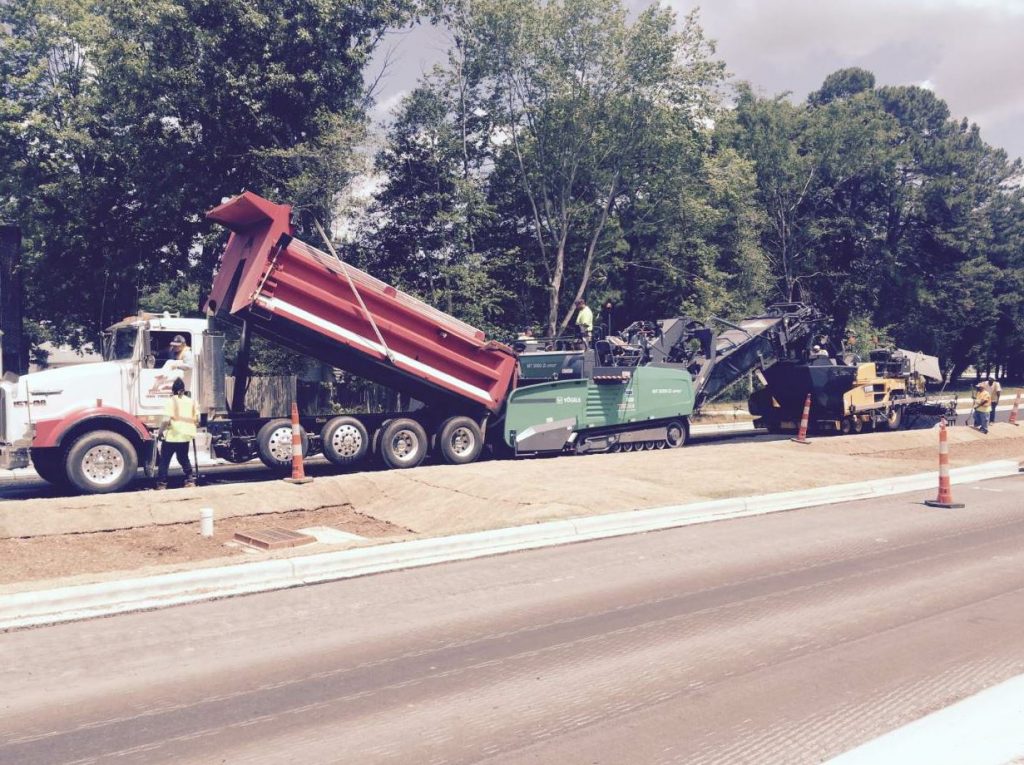
Sunrock used a Vogele MT 3000-2i Offset material transfer machine on the Sandy Forks project so the crew could pave continuously and the asphalt would be remixed on site.
With the addition of Barrett’s contracting group, Sunrock became North Carolina’s first vertically integrated contractor, from materials to site work to asphalt laydown.
In 2017, Barrett estimates that Sunrock’s paving crews laid nearly 350,000 tons of asphalt.
Of that total tonnage, 18,000 tons went to the Sandy Forks Road project.
Sandy Forks, Sunrock and Sustainability
Sandy Forks Road was originally built in the 1970s as a two-lane connector road in North Raleigh. Over time, homes and businesses began to develop alongside the 1.5-mile-long corridor.
“It kept getting patched and repaired, and over the years it saw more and more traffic,” Barrett said. It also began to see more pedestrian and bike traffic. By the time Sunrock got its crews on the job, the road was overdue for an update.
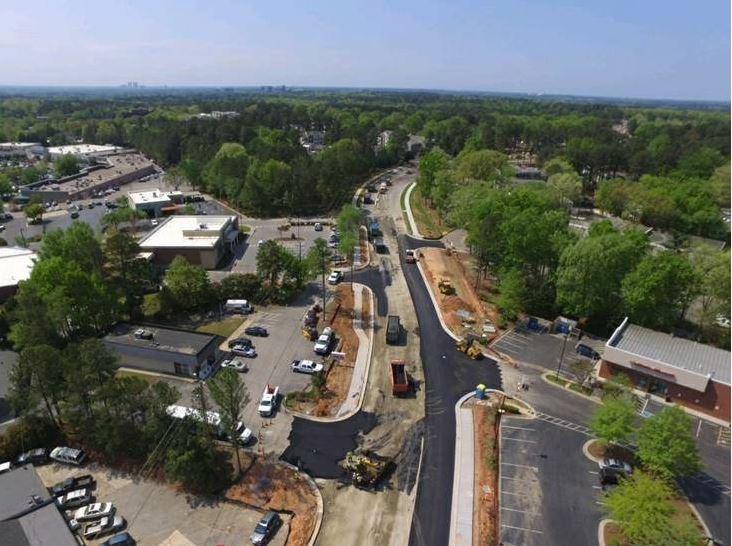
The Sandy Forks project too 18 months to complete, from January 2016 until July 2017.
“When the residents around there would walk to the nearby stores and restaurants, they’d be walking along the shoulder,” Barrett said. The city decided to upgrade the road to a two-lane road with center turn lanes, divided medians, retention ponds, new curb and gutter, as well as new sidewalks and asphalt bike lanes–all work performed by Sunrock.
In total, the 4-lane-mile, $9.9 million project took 18 months to complete, from January 2016 until July 2017.
From the very beginning, the city and Sunrock wanted to qualify for a Greenroads certification.
The Greenroads Foundation was established in 2010 to advance sustainability in transportation infrastructure. It also manages the Greenroads Rating System, a certification process for sustainable transportation development projects in the United States and internationally.
Greenroads grades its projects based on a number of factors, including the project requirements, environment and water, construction activities, materials and design, utilities and controls, access and liveability, and creativity and effort.
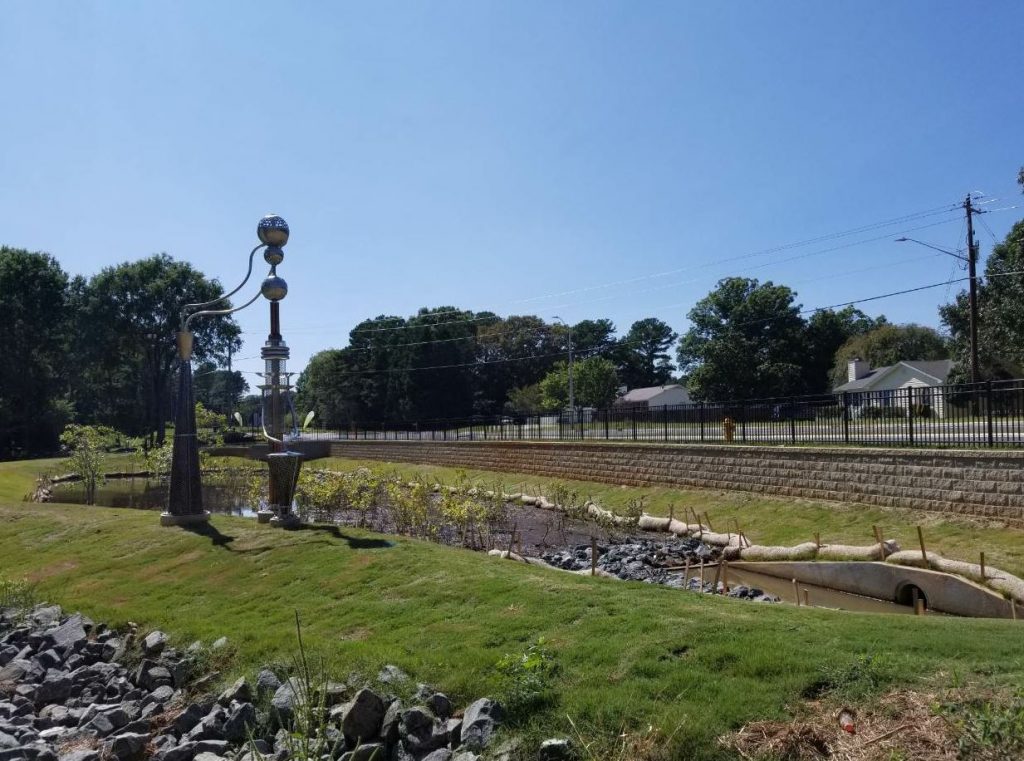
The project also included construction of two bioretention cells within the median of the corridor and a water-filtering art sculpture.
Sandy Forks is the 45th project to be certified since 2012, with an overall score of 51. Today, more than 130 projects are currently seeking certification from 11 states and eight countries, according to the Foundation.
“Greenroads is sort of like the LEED program, but for civil construction,” Barrett said. “Greenroads are all about using sustainable practices and materials to build the project.”
To make the project as sustainable as possible, Sunrock incorporated a number of green initiatives and practices, including use of warm-mix asphalt (WMA),reclaimed asphalt pavement (RAP), recycling the materials on site and water conservation, to name a few.
The project required 18,000 tons of Superpave mix, specified by the city, for the new roadway and bike lanes.
According to Director of Quality Control Vasyl Shymonyak, the job required I-19B for the 4-inch intermediate layer and 9.5-mm B for the top two lifts.
“The first lift of 1.5 inches was a warm mix and, for the final lift of 1.5 inches, we used hot mix because we thought we’d get a better result with hot mix temperature and that the hand work would be better,” Barrett said.
The hot-mix asphalt (HMA) was produced at standard temperatures of around 300 degrees, and the WMA for the project was produced at 260 degrees, plus or minus 15 degrees, according to Shymonyak. Based on the parameters of the job, this lower temperature limit was set by the City of Raleigh, following department of transportation specifications.
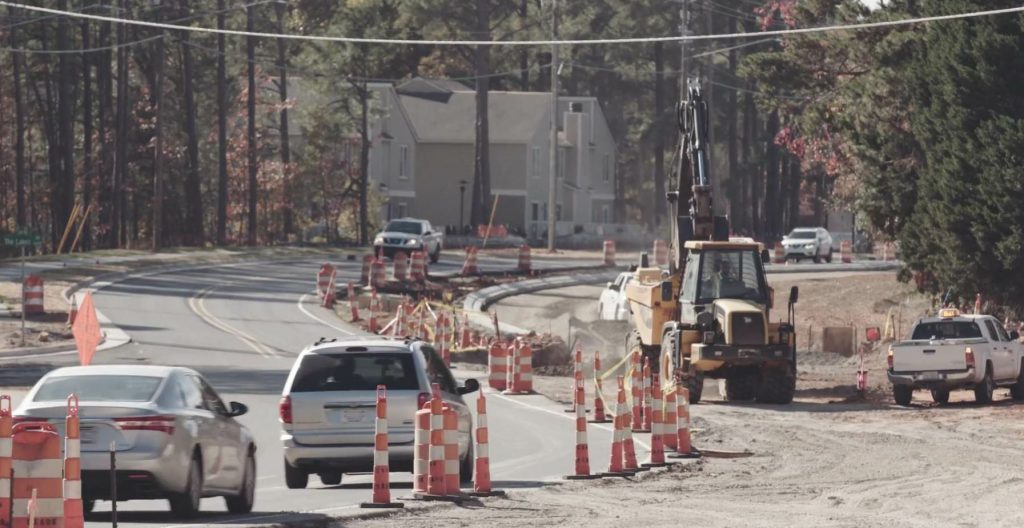
Sandy Forks Road was originally built in the 1970s as a two-lane connector road in North Raleigh. Over time, homes and businesses began to develop alongside the 1.5-mile-long corridor.
According to Shymonyak, Sunrock added 0.5 percent Morlife anti-strip to the HMA and 0.5 percent Evotherm to the WMA used on this project. Using WMA for a part of this project also required plant personnel to test temperatures more often. Shymonyak estimates they sampled every five loads, or about every 750 tons.
Sunrock also incorporated 30 percent RAP into the mix used on the Sandy Forks project, which Barrett estimates is about average for Sunrock projects. The upper limit in the state is around 40 percent, he said.
The company also recycled the concrete from the job to use for stone base, hauling it to one of Sunrock’s facilities only 8 miles from the job site. Forty percent of the 24,000 tons of stone base on the project were recycled from the previous road.
The crews also hauled 12,000 yards of excess dirt to another City of Raleigh project. They also constructed two bioretention cells within the median of the corridor, which treats and removes pollutants including nitrogen, phosphorus and hydrocarbons, reducing environmental impacts downstream in the Neuse watershed.
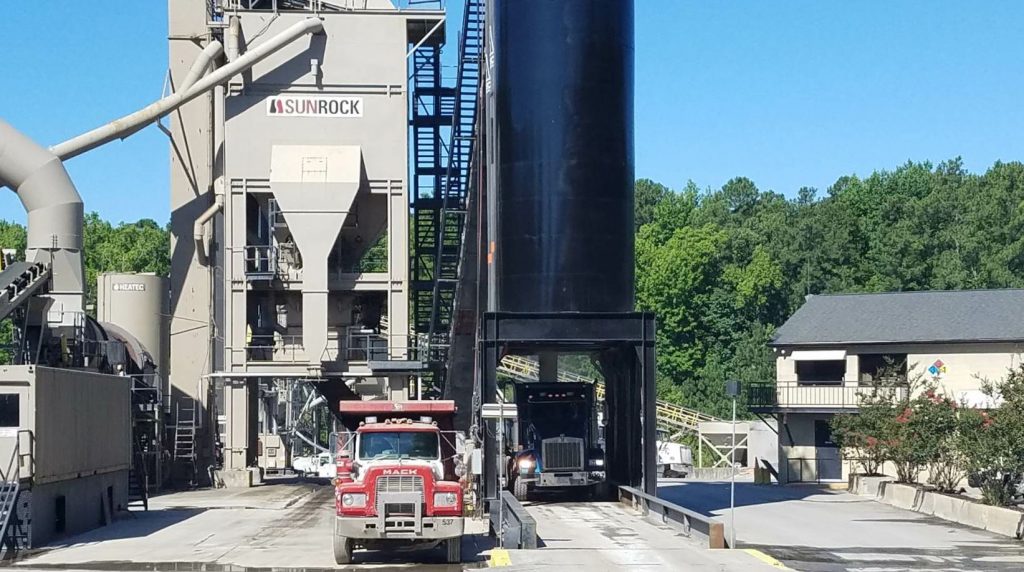
Today, the company has six active asphalt plants, with a seventh in progress. This photo shows Sunrock’s Astec Double Barrel near Raleigh–Durham International Airport.
The project also included efficient LED lighting, benches, a water-filtering art sculpture, and educational signage about the project’s sustainability.
In addition to environmental sustainability, many of these choices also led to savings on materials, reduced transportation of materials, and less energy and fuel use. For example, by hauling the excess dirt to its Buck Jones Road project in South Raleigh, Sunrock saved money and could avoid taking the dirt to a landfill instead.
“There wasn’t any monetary incentive to get this certification, but we all bought into it: us as the builders, the city as the owner and their engineers, RK&K,” Barrett said. “It also made everyone work together a bit more, because we all had skin in the game in a different way than usual.”
“I was familiar with LEED certification and appreciated that Greenroads brings that level of attention to sustainable transportation projects,” said Chris Johnson, City of Raleigh Division Manager for Roadway Design and Construction. “Raleigh’s interest in incorporating sustainability into projects gave me the political support to recommend this project for certification and use it as a learning tool for our team.”
The new roadway is comprised of two 11-foot-wide travel lanes, an 11-foot-wide center turn lane, and two 5-foot-wide bike lanes for a total width of 43 feet. The crew paved two 16-foot passes for the travel lanes and bike lanes, and then an 11-foot pass to pave the inside turn lane, using their 10-foot Volvo P7170B paver to construct the mainline paving and a CAT AP655 track paver to pull the intersections and turn lanes.
Then, the crew compacted the project with its Cat CB7 and Hamm HD120VO rollers.
Accomplishing good rideability on the project was a challenge, Barrett said. The crews had to tie into curbs and gutters and pave around plenty of manholes.
“We did a lot of engineering to get the profile of that final lift as smooth as possible,” Barrett said. Before the final lift, the crews micro-milled and skin patched the first lift to ensure the final lift could be paved without any grade adjustments.
“Because the roadway had curb and gutter along both outside edges of the road and delineating the median islands this made for a unique and challenging situation to attempt to achieve good rideability,” Barrett added. The gutter was the controlling grade, so the skin patching and profile milling was done to create a smooth, uniform surface that was 1.5 inches below the gutter line before the final lift was paved. “We could not use a joint matcher on the curb because curb is not poured as smooth as a road is paved. Instead of a joint matcher we used two 30-foot non-contact ski poles to average the grade on each side of the paver as we placed the final 1.5 inches of asphalt to take our best shot at achieving good rideability.”
“Because we milled and skin patched, we were a very uniform 1.5 inches below the curb,” Barret said. “We achieved a very good tie in to the curb while building a smooth surface because we used the ski poles to average the grade.”
The crew used a Vogele MT 3000-2i offset material transfer machine to continuously pave and eliminate bumping the paver, as well as remix the asphalt.
Ultimately, every bit of extra effort paid off.
“We took it from a two-lane road where pedestrians and bikers were riding at their own risk to something really nice,” Barrett said. He also expects the success of Sandy Forks Road to impact Sunrock’s future work.
“Even before Greenroads, Sunrock and many others in our industry were already using a lot of sustainable practices,” Barrett said. “But this project made us more aware of the importance of these practices. We’re not just doing them to save money and be more competitive, but also because they impact our environment, and long term sustainability makes a difference. We’ll definitely be looking for more ways we can use these types of sustainable practices in the future.”
